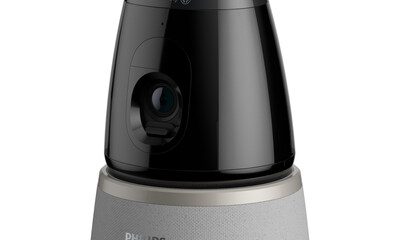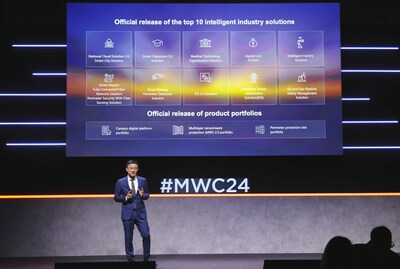Health
How is Yoga and Pilates Bridging the Gap Between your Mind and Body

These practices go beyond trends serving as gateways to improved health and mindfulness.
Through flexibility, balance, core strength and muscular endurance, you can improve your overall health and wellbeing.
However, the benefits don’t stop there—your mental wellbeing will also receive a boost.
Benefits of blending Yoga and Pilates
Blending yoga and Pilates can provide a comprehensive workout that enhances physical strength, flexibility, posture and mental well-being.
The combination of these two mindful exercises forms a powerful routine that amplifies the benefits of yoga and Pilates individually. It’s like getting the best of both worlds in one session!
This blend strengthens your mind-body connection, increasing your awareness of how you move through space. Not only does it boost your physical wellness by improving muscle tone and joint health, but it also promotes mental wellness.
Practising yoga and Pilates together encourage mindfulness which helps reduce stress levels, fosters inner peace and heightens self-awareness.
Understanding the Core Principles of Yoga
At its essence, yoga aims to unite the body, mind and spirit through a combination of postures, breath control, meditation and ethical principles.
Yoga represents the understanding that our bodies and minds are inherently connected.
By practicing and maintaining a balance between them we can genuinely attain a state of equilibrium and overall wellness.
In yoga, posture plays a role in establishing harmony between the body and mind.
By moving the body into positions and holding them for specific durations practitioners cultivate strength, flexibility and balance while simultaneously nurturing mindfulness.
Each posture in yoga serves a purpose by targeting muscles and energy centres within the body.
The inclusion of breathing techniques aids in regulating the breath pattern while bringing focus to the moment. The breath acts as a bridge connecting the body with the mind, enabling relaxation and concentration during practice.
Why mindful approach is important
Chances are you’ve come across the saying ‘a healthy mind in a healthy body’, but have you ever taken a moment to ponder its deep influence on your everyday life?
Studies suggest that focusing on the moment can have benefits for both our physical and emotional health.
Therapies centred around mindfulness have demonstrated efficacy in alleviating symptoms of anxiety and depression.
Additionally, there is supporting evidence that practising mindfulness techniques can contribute to a reduction in blood pressure levels and enhance sleep quality. It’s also suggested that mindfulness practices may assist individuals in managing pain.
Having a sound mind is not just about intellectual capabilities, but also about being able to maintain psychological well-being and emotional resilience amidst life’s challenges.
Exploring the Fundamentals of Pilates
Pilates is a practice that emphasises building core strength, improving posture and enhancing body alignment. It’s an engaging system of exercises designed to challenge your body in unique ways.
You’ll work with precision and control, focusing on quality over quantity.
Your core becomes like a powerhouse – not just your abs but also deeper muscles responsible for stability and balance.
With regular practice, you can expect improved flexibility and coordination. But don’t be fooled into thinking it’s all about physicality.
Pilates also cultivates a strong mind-body connection. You’re required to concentrate during each movement, directing your attention inwardly while syncing your breath with every exercise.
Don’t worry if you can’t go to a gym or studio; Pilates is adaptable for at-home sessions using an exercise mat or even specialised equipment like reformers or chairs if you have access to them.
The Physical and Mental Benefits of Yoga and Pilates
- Yoga and Pilates can help improve your posture, increase strength and reduce pain. These practices can prevent back pain, muscle soreness and other discomforts.
- Pilates specifically focuses on strengthening your core muscles, which can protect you from injuries like falls.
- Both yoga and Pilates promote mindfulness and incorporate breathing techniques that can improve your mood, induce relaxation, and help maintain focus. Mindfulness and relaxation techniques are also beneficial in the treatment of health conditions such as depression or anxiety. It might be worth discussing the inclusion of yoga in a health wellness plan with your doctor.
- The breathing exercises involved in yoga practice increase awareness of your breath. Many individuals find this helpful for managing their asthma symptoms.
- Pilates focuses on motion that improves posture alignment, making it a great choice for aiding in injury recovery. This attention to technique aids in addressing muscle weakness during the recovery process after an injury.
If you’re recovering from an injury, make sure to inform your instructor, so they can modify the movements based on your circumstances and abilities.
Difference between Yoga and Pilates
Yoga and Pilates have distinct approaches regarding fitness.
Yoga prioritises flexibility and targeting different muscle groups, while Pilates is dedicated to crafting muscles, enhancing body coordination and building core strength.
Engaging in Yoga helps you develop endurance, spirit Improve your balance while enhancing the quality and strength of your body.
Moreover, most yoga sessions consist of a series of poses, including warrior pose, cobra pose, tree pose, and downward dog. These poses allow you to leverage your own body weight as a form of resistance.
Compared to Pilates, Yoga is generally not as fast-paced. It emphasises mindfulness and deep breathing throughout the class. While there are styles of yoga, most classes typically involve holding different poses and moving through different sequences of movements.
Yoga vs Pilates – which one’s right for you?
When considering whether yoga or Pilates is the choice for you, take into account your fitness goals, your preference for spiritual aspects and your desire for a deep mind body connection.
If you’re looking to improve flexibility, find tranquillity and establish a spiritual bond then yoga might be the perfect fit for you.
On the hand if your focus is on strengthening your core and improving your posture while still maintaining mindfulness Pilates could be the option.
Remember that both practices offer their benefits. You can even incorporate elements of both into your exercise routine if that suits you.
Ultimately, it’s about discovering what resonates with you and aligns with your lifestyle.

Food
Which of the Following Will Destroy Most Food Allergens?

Food allergens are substances found in certain foods that can trigger an immune response in individuals with food allergies. These allergens are typically proteins or protein fragments that the body mistakenly identifies as harmful, leading to various allergic reactions. Food allergies can range from mild symptoms like hives, itching, and digestive issues to severe and potentially life-threatening reactions, such as anaphylaxis.
The Importance of Addressing Food Allergens
With the increasing prevalence of food allergies, addressing food allergens has become a crucial concern for the food industry, healthcare professionals, and individuals living with these conditions. Effective methods to destroy or reduce the potency of food allergens can improve food safety, expand dietary options for those with allergies, and prevent potential life-threatening situations.
Common Food Allergens
Peanuts and Tree Nuts
Peanuts and tree nuts, such as almonds, walnuts, and cashews, are among the most common and severe food allergens. These allergens can cause severe reactions, including anaphylaxis, even with trace amounts.
Eggs
Eggs, particularly the proteins found in egg whites (ovalbumin and ovomucoid), are another major food allergen. Egg allergies are prevalent in children, although some individuals may outgrow this allergy over time.
Milk and Dairy Products
Milk and dairy products contain several allergenic proteins, including casein and whey. Milk allergies are common in infants and young children but can persist into adulthood for some individuals.
Wheat and Gluten
Wheat and gluten, the protein found in wheat, barley, and rye, can trigger allergic reactions in individuals with wheat allergy or celiac disease. Gluten intolerance and sensitivity are also widespread concerns.
Soy
Soy is a common allergen, particularly in infants and children. Soy-based products, such as soy milk, tofu, and soy sauce, can cause allergic reactions in sensitive individuals.
Fish and Shellfish
Fish and shellfish, such as shrimp, crab, and lobster, are among the most potent food allergens. These allergens can cause severe and potentially life-threatening reactions, even with minimal exposure.
Methods to Destroy Food Allergens
While complete elimination of food allergens is challenging, various methods can effectively reduce or destroy their potency, making foods safer for individuals with allergies.
Heating and Cooking
Temperature and Duration
Heat treatment is one of the most common and effective methods for reducing or destroying food allergens. Many allergens are proteins, and exposing them to high temperatures can denature or break down their structure, rendering them less allergenic or non-allergenic.
The temperature and duration required to destroy food allergens vary depending on the specific allergen and the food matrix. For example, milk and egg allergens can be effectively reduced or eliminated by cooking at temperatures above 70°C (158°F) for several minutes. Peanut and tree nut allergens may require higher temperatures, typically above 90°C (194°F), to achieve significant allergen reduction.
However, it’s important to note that some allergens, particularly those found in certain seeds and legumes, can be more resistant to heat treatment and may require additional processing methods or a combination of techniques.
Limitations
While heating and cooking can be effective in reducing or destroying food allergens, there are limitations to this method. Some heat-resistant allergens may remain allergenic even after extensive cooking. Additionally, certain foods or dishes may not be suitable for high-heat treatment due to quality or sensory considerations.
Chemical Treatments
Acidic Solutions
Exposing food allergens to acidic solutions, such as vinegar or citric acid, can potentially denature or break down the allergen proteins, reducing their allergenicity. This method is particularly effective for certain milk and egg allergens.
Enzymatic Treatments
Enzymatic treatments involve the use of specific enzymes that can selectively target and break down allergen proteins. For example, certain proteases (enzymes that break down proteins) have been shown to effectively reduce the allergenicity of milk, egg, and peanut allergens.
Irradiation
Ionizing Radiation
Ionizing radiation, such as gamma rays or electron beams, can be used to modify or degrade food allergens. This method works by disrupting the chemical bonds within the allergen proteins, potentially reducing their allergenicity.
The effectiveness of irradiation in destroying food allergens depends on factors such as the radiation dose, the type of allergen, and the food matrix. While this method has shown promising results in reducing allergens in certain foods, it may also affect other properties of the food, such as flavor, texture, and nutrient content.
Non-Ionizing Radiation
Non-ionizing radiation, such as ultraviolet (UV) light or pulsed light, has also been explored as a potential method for reducing or destroying food allergens. These methods can disrupt the structure of allergen proteins through photochemical reactions, rendering them less allergenic.
However, the effectiveness of non-ionizing radiation can vary depending on the specific allergen and food matrix, and further research is needed to fully understand its potential and limitations.
Processing and Manufacturing
High-Pressure Processing (HPP)
High-pressure processing (HPP) is a non-thermal food preservation technique that subjects foods to extremely high pressures, typically ranging from 400 to 800 megapascals (MPa). This process can cause structural changes in allergen proteins, potentially reducing their allergenicity.
HPP has shown promising results in reducing the allergenicity of various foods, including milk, eggs, and peanuts. However, the effectiveness can vary depending on the specific allergen, food matrix, and processing conditions.
Extrusion
Extrusion is a manufacturing process that involves forcing food materials through a die or small opening under high temperature and pressure. This process can potentially denature or degrade allergen proteins, reducing their allergenicity.
While extrusion has been explored for reducing allergens in certain foods, such as wheat and soy products, its effectiveness may depend on various factors, including the specific allergen, extrusion conditions, and food composition.
Factors Influencing the Effectiveness of Allergen Destruction
The effectiveness of any method in destroying food allergens can be influenced by several factors, including:
Food Matrix and Composition
The food matrix and composition can impact the accessibility and susceptibility of allergens to various treatments. For example, allergens present in complex food matrices or surrounded by other food components may be more resistant to certain methods.
Allergen Concentration
The concentration of allergens in a food can influence the effectiveness of the destruction method. Higher concentrations of allergens may require more intensive or prolonged treatments.
Processing Conditions
Specific processing conditions, such as temperature, duration, pressure, pH, and the presence of other substances (e.g., enzymes, chemicals), can significantly affect the efficacy of allergen destruction methods. Optimizing these conditions is crucial for achieving the desired level of allergen reduction or elimination.
Challenges and Considerations
While various methods exist for destroying or reducing food allergens, there are several challenges and considerations to address:
Regulatory Guidelines
Food allergen labeling and regulations vary across different countries and regions. It is essential to comply with the relevant guidelines and regulations when implementing allergen destruction methods in food production. Validation and monitoring procedures may be required to ensure the safety and accuracy of allergen claims.
Food Safety and Quality
Certain methods for destroying food allergens, such as chemical treatments or irradiation, may potentially introduce new safety concerns or affect the overall quality and sensory properties of the food. It is crucial to carefully evaluate the impact of these methods on food safety, nutritional value, and consumer acceptance.
Regulatory Guidelines
Food allergen labeling and regulations vary across different countries and regions. It is essential to comply with the relevant guidelines and regulations when implementing allergen destruction methods in food production. Validation and monitoring procedures may be required to ensure the safety and accuracy of allergen claims.
Food Safety and Quality
Certain methods for destroying food allergens, such as chemical treatments or irradiation, may potentially introduce new safety concerns or affect the overall quality and sensory properties of the food. It is crucial to carefully evaluate the impact of these methods on food safety, nutritional value, and consumer acceptance.
Consumer Acceptance
While reducing or eliminating food allergens can expand dietary options for individuals with allergies, consumer acceptance of the methods used and potential changes in food properties should be considered. Transparent communication and education about the safety and efficacy of allergen destruction methods may be necessary to gain consumer trust and confidence.
People Also Read:
Conclusion
Destroying food allergens is a complex challenge that requires a combination of various methods and careful consideration of factors such as the specific allergen, food matrix, processing conditions, and regulatory guidelines. While no single method can eliminate all allergens, the techniques discussed, including heat treatment, chemical treatments, irradiation, and advanced processing methods, offer promising solutions for reducing the allergenicity of foods.
Effective allergen destruction can improve food safety, expand dietary options for individuals with food allergies, and facilitate the development of new products that meet the needs of this growing consumer segment. However, it is crucial to strike a balance between allergen reduction and maintaining food quality, safety, and consumer acceptance.
Ongoing research and collaboration between the food industry, regulatory bodies, and scientific communities are essential to continually refine and optimize allergen destruction methods, ensuring a safer and more inclusive food supply for all.
FAQs
Can cooking completely eliminate all food allergens?
While cooking and heat treatment can effectively reduce or destroy many food allergens, it is important to note that some allergens may be more resistant to heat and may require additional processing methods or a combination of techniques. Complete elimination of allergens through cooking alone may not be possible for certain foods or allergens.
Are chemical treatments safe for destroying food allergens?
Chemical treatments, such as the use of acidic solutions or enzymes, can be effective in reducing or destroying food allergens. However, it is crucial to ensure that these treatments are carefully controlled and comply with food safety regulations. Any residual chemicals or byproducts should be within safe limits and not pose additional health risks.
Can irradiation affect the nutritional value of food?
Irradiation, particularly ionizing radiation, can potentially affect the nutritional value of food by degrading certain vitamins and other nutrients. The extent of nutrient loss depends on factors such as the radiation dose, food composition, and storage conditions. Careful consideration and monitoring of potential nutrient losses are necessary when using irradiation for allergen destruction.
Are there any risks associated with high-pressure processing (HPP) for allergen reduction?
High-pressure processing (HPP) is generally considered a safe and effective method for reducing food allergens. However, it is important to ensure that the processing conditions are properly controlled and validated. Potential risks may include the introduction of contaminants or the formation of undesirable compounds if the processing parameters are not optimized.
How can consumers identify products that have undergone allergen destruction processes?
Regulatory bodies and food labeling guidelines play a crucial role in informing consumers about the allergen status of food products. Products that have undergone allergen destruction processes should be clearly labeled with accurate and transparent information about the methods used and the potential presence of residual allergens.
Health
Zepp Health Launches Zepp OS 3.5 with Zepp Flow™

Zepp Health Corporation (“Zepp Health”) (NYSE: ZEPP), a global leader in smart wearables and health technology, today announces a significant stride in wearable intelligence with the introduction of Zepp OS 3.5, featuring Zepp Flow™. This revolutionary enhancement brings a whole new level of interaction to wearable devices, marking a pioneering advancement in the industry, making Zepp Health’s Amazfit smartwatches the first to have a fully integrated Natural-Language User Interface (LUI) powered by LLM AI in its operating system.
Zepp Flow™, the centerpiece of Zepp OS 3.5, represents much more than just a voice assistant; it embodies a paradigm shift in user experience. Inspired by the concepts of balance and harmony, the name “Flow” encapsulates the smooth and intuitive nature of user interaction. Much like the effortless movement of water or the focused energy experienced in a state of “flow,” Zepp Flow™ facilitates a seamless connection between users and their devices, allowing for natural, uninterrupted interaction.
Designed to understand natural language, Zepp Flow™ eliminates the need for predefined commands or keywords, enabling users to express their intentions freely. By intuitively interpreting user requests, whether it’s initiating a workout or managing daily tasks, Zepp Flow™ streamlines the user experience, making it more intuitive and effortless than ever before. This breakthrough represents a significant leap towards a future where artificial intelligence seamlessly integrates into everyday life, particularly in health, fitness, and productivity domains.
A Future of Connectivity and Intelligence
With a global presence spanning over 90 countries and a user base exceeding 42 million, Zepp Health, through its renowned brands like Amazfit, is committed to redefining the way individuals approach their health and wellness. By harnessing advanced technology and fostering collaboration across its brand portfolio, Zepp Health is at the forefront of innovation, shaping the future of wearable technology.
Through Zepp Flow™, Zepp Health continues to push the boundaries of wearable technology, empowering users to seamlessly integrate smart devices into their daily lives. Zepp Flow™ represents a significant milestone in wearable intelligence, embodying the seamless integration of AI into people’s everyday lives. “With dedicated R&D teams across North America, Europe, and Asia, we are committed to driving innovation and delivering unparalleled user experiences, to bring intelligent healthcare solutions empowering people to take control of their well-being,” said Wayne Huang, CEO of Zepp Health. He added, “Zepp Flow™ epitomizes our dedication to unified connectivity and intelligent functionality throughout our ecosystem. Expanding its reach from the Zepp OS on smartwatches to the Zepp App on smartphones, and integrating with natural language processing, Zepp Flow™ asserts itself as the omnipresent AI within our system. Whether it resides on your smartwatch, earbuds, our app on your phone, or in the cloud, Zepp Flow™ guarantees a seamless and intuitive experience across all platforms.”
How Zepp Flow™ Works
Zepp Flow™ boasts several key features that redefine user experience:
- Natural Conversation: Unlike traditional voice assistants, Zepp Flow™ allows users to express themselves freely without requiring specific command phrases.
- Efficient Recognition: Zepp Flow™ rapidly and accurately recognizes user speech, ensuring a smooth and responsive interaction.
- Precise Understanding: Users need only describe what they want, and Zepp Flow™ will recognize their intent and provide the most appropriate response.
Availability
- Zepp OS 3.5 and Zepp Flow™ will be supported on the Amazfit Balance in the US, Canada, United Kingdom and Republic of Ireland, via a firmware update on February 26th.
- Amazfit Balance users in France, Italy, Germany, Spain, Liechtenstein, Luxembourg, Monaco, Switzerland, Andorra, Austria, Belgium, and San Marino will be able to upgrade to Zepp OS 3.5 on May 1st.
- The Amazfit Cheetah series, Amazfit Falcon, and Amazfit T-Rex Ultra will receive this update on a rolling basis, starting from May 28th through until June 11th. The Amazfit Active will be upgraded on June 20th.
About Zepp Health Corporation
Zepp Health (NYSE:ZEPP), a global smart wearable and health technology leader, empowers users to live their healthiest lives by optimizing their health, fitness, and wellness journeys through its leading consumer brands, Amazfit, Zepp Clarity, and Zepp Aura. Powered by its proprietary Zepp Digital Health Management Platform, which includes the Zepp OS, AI chips, biometric sensors, and data algorithms, it delivers cloud-based 24/7 actionable insights and guidance to help users attain their wellness goals. To date, Zepp Health has shipped over 200 million units and its products are available in 90+ countries. Founded in 2013, Zepp Health has offices across the Americas, EMEA, and APAC regions. For more information, visit www.zepp.com.
Health
Huawei Launches Medical Tech Solution for Intelligent Healthcare

During MWC Barcelona 2024, Huawei officially launched its Medical Technology Digitalization Solution as part of its effort to lead the digital and intelligent upgrade of the healthcare industry.
David Shi, Vice President of Huawei’s ICT Marketing & Solution Sales, said, “To accelerate the intelligent upgrade of the healthcare industry, Huawei, as an ICT provider, builds a secure and sustainable digital foundation for the healthcare industry and helps it go intelligent.” He emphasized that together with partners, Huawei aims to help its customers succeed.
Thousands of images read in seconds, accelerating the digital & intelligent upgrade of medical technology services
The medical technology digitalization solution focuses on pathology and medical imaging. The solution has three competitive advantages: SmartCache intelligent pre-reading, which improves image reading efficiency and achieves zero latency during data retrieval; the Huawei-developed compression algorithm, which saves 30% storage and 70% cabinet space; and video-network synergy, which supports consistent remote diagnosis to promote hierarchical diagnosis and treatment.
This solution has been applied in many healthcare institutions around the world. Huawei helped Ruijin Hospital build a digital smart pathology department, which enables the concurrent access of 1000+ pathological sections within one second. This improved the retrieval speed by 80 times. Huawei helped the Health Bureau of Longgang District, Shenzhen build a regional medical imaging platform. It supports the interconnection and sharing of medical image data among 12 hospitals, one-click access to image reports, and mutual recognition of cross-hospital examinations.
Deep scenario-technology integration and innovative upgrade of three solutions
Huawei leverages cloud-network-edge-device synergy to dig deep into service scenarios and upgrade three major solutions.
The Smart Ward Solution looks to Wi-Fi, IoT, and multi-band convergence in one network to support data collection for more than 400 terminals, delivering high-quality diagnosis and treatment.
The Smart Hospital Campus Solution uses the digital platform to streamline campus operations subsystems, achieving all-scenario intelligent services and E2E refined operations.
The One Hospital, Multiple Branches Solution builds an integrated cloud-network-edge resource base to implement unified management as well as diagnosis and treatment services of the same quality across different hospital branches.
So far, Huawei has served over 5000 hospitals and medical institutions in more than 110 countries and regions.
-
Business11 months ago
How to Earn Money Writing Blog Posts in 2023: A Comprehensive Guide
-
Games11 months ago
How does Dead Space Remake enhance the Horror Classic of 2008
-
Video10 months ago
Everything you need to know about Starfield
-
Business10 months ago
How to Use LinkedIn to Build Your Professional Brand
-
Health11 months ago
Migraine medications significantly improve the quality of life
-
Self Improvement10 months ago
Enhancing Relationships and Emotional Intelligence Through Mindfulness Meditation
-
World10 months ago
Swiss Pharma Powerhouse Acino Expands into Latin America with M8 Pharmaceuticals Acquisition
-
Tech10 months ago
Upgrade Alert: Why iPhone 15 Pro and Pro Max Are Worth the Investment






































